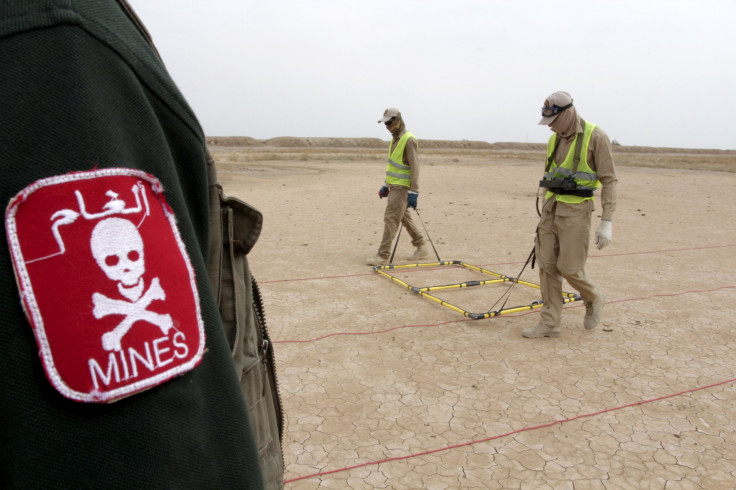Landmine Detection: Glowing Bacteria Can Help Clear Minefields

Landmines scattered around various parts of the world are not only a cause of death and injury, but also lead to large tracts of land being left unused. This creates an economic impact along with the cost in terms of human life, which according to estimates by the Landmine and Cluster Munition Monitor amounted to almost 73,600 casualties in the 10 years between 1999 and 2008, based on data collected from 119 countries and regions.
For mines already planted in the ground — estimated at about 100 million in over 70 countries — a big challenge to remove them is to find them without triggering them. Most technologies used for the purpose require personnel to physically enter a minefield, putting them at great corporeal risk. That may be about to change, thanks to research carried out by the Hebrew University of Jerusalem.
In a paper published Tuesday in the journal Nature Biotechnology, researchers from the university discuss a possible remote sensing method that uses lasers and bacteria to detect landmines and other unexploded ordnance.
Read: Bionic Spinach Can Detect Bombs
Titled “Remote detection of buried landmines using a bacterial sensor,” the paper describes a system that takes advantage of the trace amounts of “explosive vapors” observed to leak from all landmines. The vapors accumulate in the soil above the spot where the landmines are buried. The researchers engineered bacteria that, when in contact with these vapors, emit a fluorescent glow. This glowing signal can be recorded from a remote location using a laser-based scanning system.
To test their theory, researchers put the bacteria in small polymer beads and scattered them across a test field which had real landmines buried in it. When the laser scanning system was used, the locations of the buried explosives showed up.

While the technique is the first demonstration of a functional remote landmine detection system, a lot of work still needs to be done before it can be implemented in the real world.
“Our field data show that engineered biosensors may be useful in a landmine detection system. For this to be possible, several challenges need to be overcome, such as enhancing the sensitivity and stability of the sensor bacteria, improving scanning speeds to cover large areas, and making the scanning apparatus more compact so it can be used on board a light unmanned aircraft or drone,” Shimshon Belkin, a professor at the university who was responsible for genetically engineering the bacterial sensors, said in a statement.
© Copyright IBTimes 2025. All rights reserved.





















